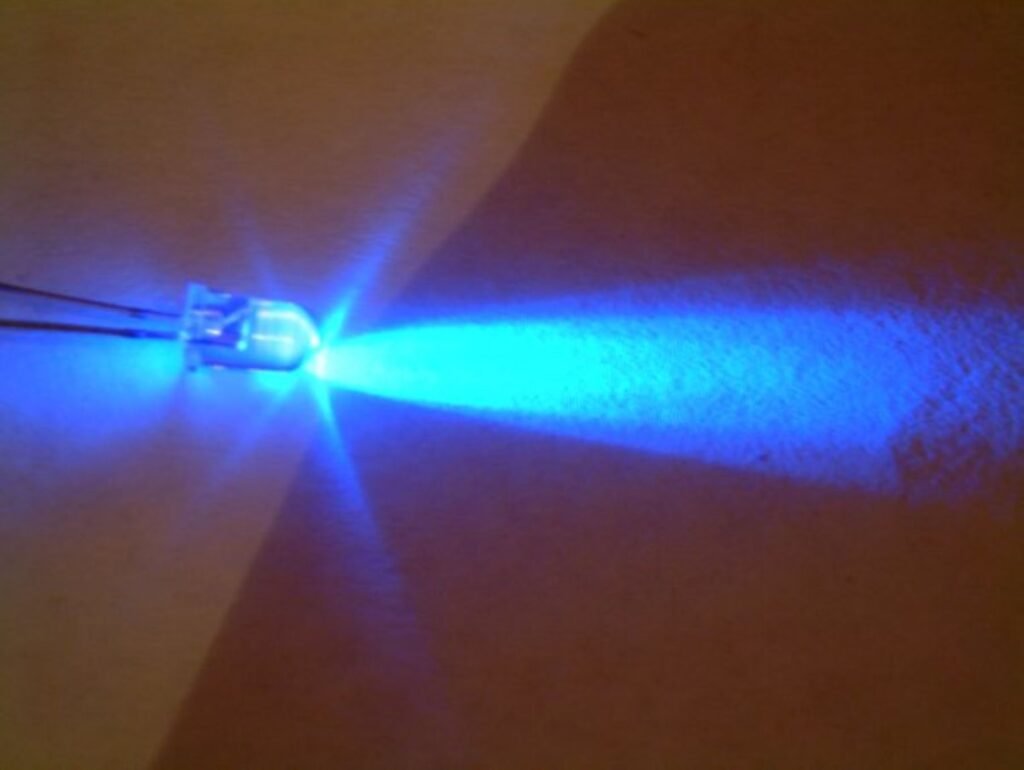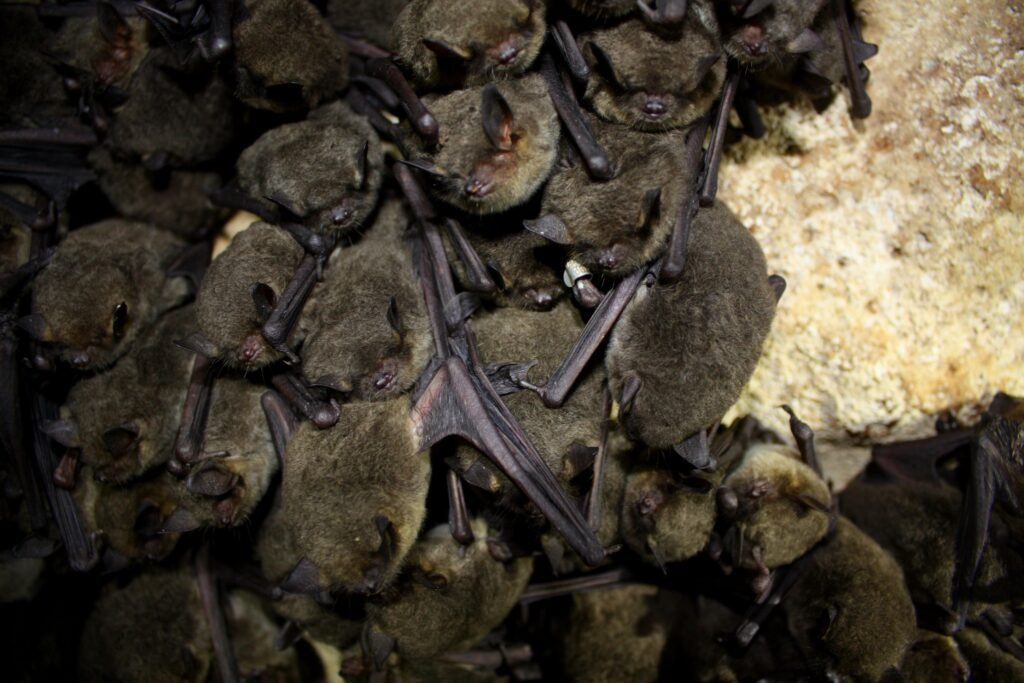After nearly two decades of devastating losses, Pennsylvania’s bat populations are showing remarkable signs of recovery. The story begins in 2006 when a mysterious white fungus started appearing on hibernating bats in caves across New York state. By 2009, this deadly disease had spread to Pennsylvania, triggering one of the most dramatic wildlife collapses in modern history.
White-nose syndrome wiped out 99% of the bat population in Pennsylvania. What followed was a period of scientific urgency that would reshape how wildlife researchers approach disease management in the wild. Today, as we look toward the future, cutting-edge treatments using ultraviolet light are offering hope for these essential creatures.
The Silent Devastation of White-Nose Syndrome

Since its discovery in 2006, the fungal disease known as white-nose syndrome (WNS) has killed millions of bats. The disease spreads through bat colonies like wildfire during the vulnerable hibernation period. White-nose syndrome is an infection in bats caused by the fungus Pseudogymnoascus destructans that disrupts hibernation, causing dehydration and starvation.
White-nose syndrome decimated local bat populations when it showed up in the state in 2008 and began killing cave bats in 2009. Pennsylvania’s largest bat colonies experienced catastrophic losses. Greg Turner, the endangered and nongame mammal biologist with the Pennsylvania Game Commission, said white-nose syndrome decimated the bat population at the park’s mine site – from 30,000 bats to just 71 – and wiped out the 20,000 little brown bat and Indiana bat population at the Frank Felbaum Bat Sanctuary.
How the Fungus Attacks Hibernating Bats

The fungus operates with deadly precision during the months when bats are most vulnerable. Bats suffering from disease can have the fungus growing on their muzzle, ears and wings during hibernation, causing irritation and damage to the bat’s skin. This isn’t just a surface infection – it fundamentally changes how bats survive winter.
Bats with white-nose syndrome also wake up more frequently during hibernation and use up critical stored fat reserves faster than normal. The excessive energy expenditure and dehydration during winter in diseased bats can lead to starvation and death. Picture a bank account being drained faster than expected – bats simply run out of energy before spring arrives.
The Surprising Discovery of UV Light Sensitivity

Scientists made a breakthrough discovery that would change everything. As Darryl Fears at The Washington Post reports, researchers found the new treatment after spending years poring over the genome of the fungus. The scientists noticed there was a gap in P. destructans DNA. Unlike six other closely related fungus species, they realized that PD did not have the genes for an enzyme that can repair cells after exposure to ultraviolet light.
The pathogen has lost a key enzyme, UVE1, in the alternate excision repair (AER) pathway… our data suggest that P. destructans has been a pathogen of bats for millions of years and thus has likely coevolved in the absence of light. This evolutionary weakness became the key to a potential treatment.
Testing UV Light as a Weapon Against the Fungus

Laboratory tests revealed stunning results. According to the press release, they found that a low dose of UV-C killed 85 percent of the fungus. A moderate dose of UV, lasting only a few seconds, killed 99 percent of the fungus. The research proved that what took millions of years to evolve could be disrupted in seconds.
The fungus that causes deadly white-nose syndrome in bats can’t repair damage from ultraviolet light, prompting researchers to consider using it as a tool to fight the fungus. “[PD is] something that has evolved for millions of years in the dark. Its ability to repair damage caused by UV light . . . seems to be entirely lacking in this fungus,” U.S. Forest Service plant pathologist and co-author of the study Daniel Lindner tells Zachos.
UV Light as a Diagnostic Tool for Early Detection

We demonstrate that long-wave ultraviolet (UV) light (wavelength 366-385 nm) elicits a distinct orange-yellow fluorescence in bat-wing membranes (skin) that corresponds directly with the fungal cupping erosions in histologic sections of skin that are the current gold standard for diagnosis of WNS. This diagnostic capability revolutionized field research methods.
In the USGS lab testing, 98.8 percent of bats with the orange-yellow fluorescence tested positive for white-nose syndrome, whereas 100 percent of those that did not fluoresce tested negative for the disease. Targeted biopsies showed that pinpoint areas of fluorescence coincided with the microscopic wing lesions that are characteristic for WNS. Scientists now had a rapid, non-lethal way to identify infected bats in the field.
Practical Challenges of UV Treatment in Cave Environments

Palmer’s team now plans to look at how UV light can be used to treat bats with white-nose syndrome. It will be a challenge, he said, since some of the hibernacula make up miles and miles of tunnel. The logistics of treating entire cave systems present significant obstacles for researchers.
Biologists could treat high-value bats while they are hibernating, Palmer said. The team has also considered placing light systems at the entrances of hibernacula to treat bats as they enter and exit. These approaches require careful planning to avoid disrupting natural hibernation patterns while still delivering effective treatment.
Recovery Signs in Pennsylvania’s Cave Systems

Hope arrived gradually as some populations began to stabilize. Since that low of 71, Turner said the winter site now has a population of about 1,000 bats. While still far from pre-disease levels, this represents a more than thirteen-fold increase from the lowest point.
Heidi Mullendore, the education specialist at Canoe Creek State Park, said the bat sanctuary was home to about 800 bats last summer. After the little brown bats were wiped out by white-nose syndrome, big brown bats moved in. The ecosystem is adapting, with different species filling ecological niches left vacant by those that were lost.
Multiple Treatment Strategies Show Promise

Researchers aren’t putting all their eggs in one basket. Vaccinated bats in two large Wisconsin sites, where the disease is established, experienced significantly lower levels of fungal infection compared to those that received a placebo. Meanwhile, probiotic treatments are also showing encouraging results across multiple states.
The earlier UC Santa Cruz study tested a probiotic on hibernating bats in Wisconsin and found that their survival rate increased from 8.4% to 46.2%. These complementary approaches suggest that a multi-pronged strategy may be most effective in combating the disease long-term.
The Ongoing Spread and Monitoring Efforts

White-nose syndrome has killed millions of bats in North America since its detection in New York in 2007 and continues to spread. At least 40 states have detected the disease and five others have detected the fungus but no disease. The geographic expansion continues even as treatments are being developed.
In addition to conducting WNS research, the USGS is mapping the spread of WNS and coordinating the North American Bat Monitoring Program (NABat) to understand how WNS and other stressors affect the status and trends of native bats across their range. The USGS is supporting the national WNS response through four science goals: (1) provide situational awareness on the health of bat populations; (2) conduct ecological studies of bats along the gradient of disease vulnerability; (3) contribute actionable science to enhance the resiliency of bat populations; and (4) implement an adaptive, holistic approach to bat health.
Looking Forward – What Comes Next

Despite the good news at Lincoln Caverns and Canoe Creek, the bat population is very fragile. Out of the nine types of bats in Pennsylvania, two are on the federal endangered list while some others are on the state’s endangered list. Recovery remains tentative, and continued vigilance is essential.
The average little brown bat would eat approximately a thousand mosquito-sized bugs per hour,” said Jahner. He says the population is slowly starting to recover, which is good for business and the ecosystem, even though Roberts hopes they’re gone soon. Each recovering bat represents thousands of insects that won’t be bothering humans or damaging crops.
Conclusion

Pennsylvania’s bat story represents one of wildlife conservation’s most remarkable turnaround efforts. From the brink of near-extinction to cautious optimism, these flying mammals are slowly reclaiming their place in the state’s ecosystems. The innovative use of UV light treatments, combined with vaccines and probiotics, demonstrates how modern science can respond to emerging wildlife diseases.
Though challenges remain and populations are still fragile, the progress made gives hope for continued recovery. The collaboration between federal agencies, state wildlife officials, and university researchers shows what’s possible when conservation becomes a shared priority. What do you think about these innovative approaches to wildlife disease management? Tell us in the comments.




